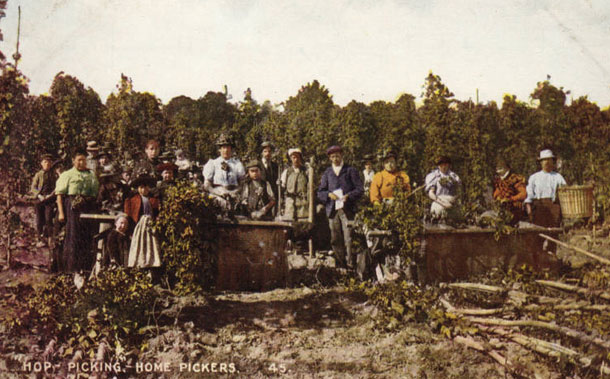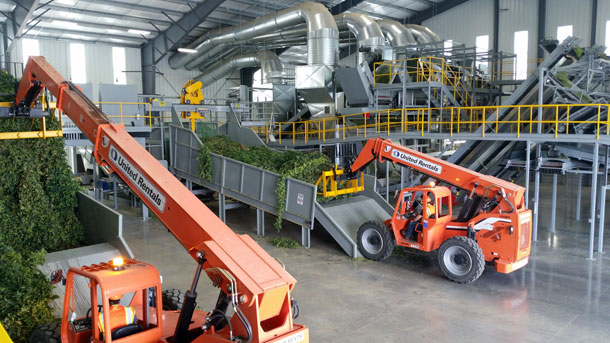Let’s start with two bits of nostalgia. Here’s a postcard from 1912 depicting a hop-picking crew in Washington’s Yakima Valley.

And here’s a photo from 2008 at Hoppefeesten, the beer and hop festival held every three years in Poperinge, Belgium. An area resident illustrates how hops used to be picked.

And here’s a photo taken last week at Perrault Farms in the Yakima Valley, which this year began using two new Dauenhauer hop picking machines, set up basically in tandem. I guess I should have shot a panoramic photo to depict the size of the operation. It is stunning.

When Alberic Perrault began growing hops in 1928 it took 100 people 30 days to harvest his 13 acres — or almost 8 workers per acre. These days in the Yakima Valley instead of workers per acre production is measured in terms of acres per worker. The average is about 20 acres per worker, and most of those acres yield considerably more pounds of hops.
we visited poperinge museum as part of beer bloggers conference tour with visit flanders. some great old pics and vids of hop picking. Interesting stories about the various practices used to increase individual families’ yields!
Nice article. The Perrault front end is a technological innovation to be sure. Like anything though it’s not without faults, but those can be overlooked by the huge savings in labor and additional throughput possible. By and large, a hop picker in the Pacific Northwest these days is Mexican. Farms usually have a core group of guys that stick around all year, but the payroll swells in the spring and again at harvest with Mexican workers. They work hard … really hard. Even with minimum wage at nearly $10/hour it seems like a good deal.
Talk of $15/hour minimum wage in Washington State ironically will very likely bring about more mechanization of the picking process. That combined with further reduction of human labor anywhere possible with autonomous trucks and tractors and the hop industry will be a very different place. That may happen sooner than you think. As I write this, there’s an autonomous tractor parked in an apple orchard about 1/4 mile down the road. Gone will be the days of romantic pictures of crews working hard in the fields. That seems sad since we like to be nostalgic about the good old days, but I suppose it is in the name of progress.